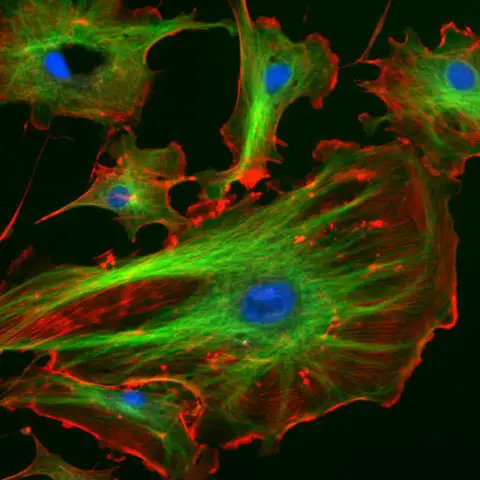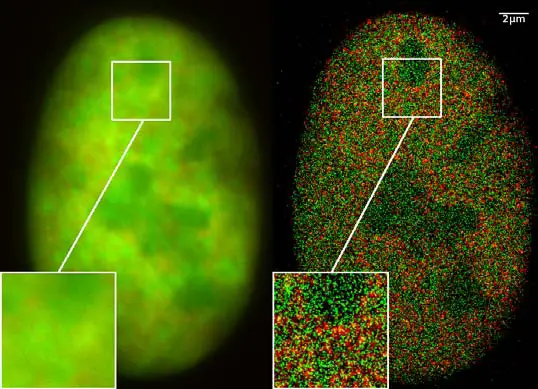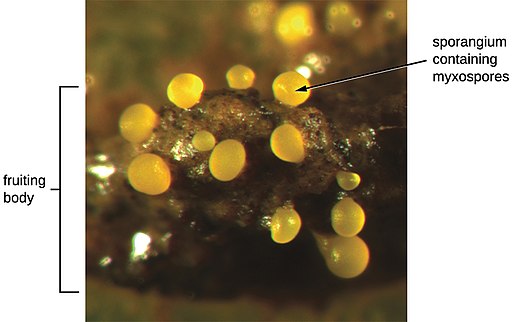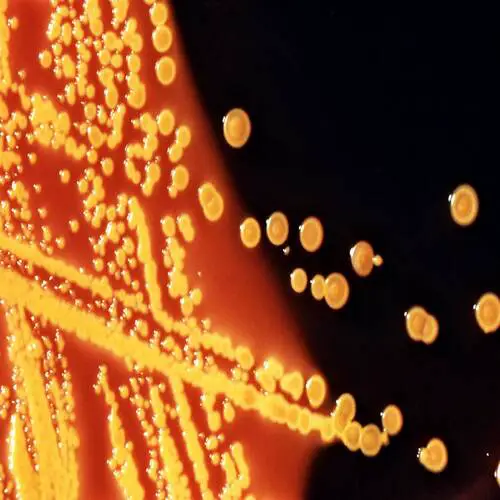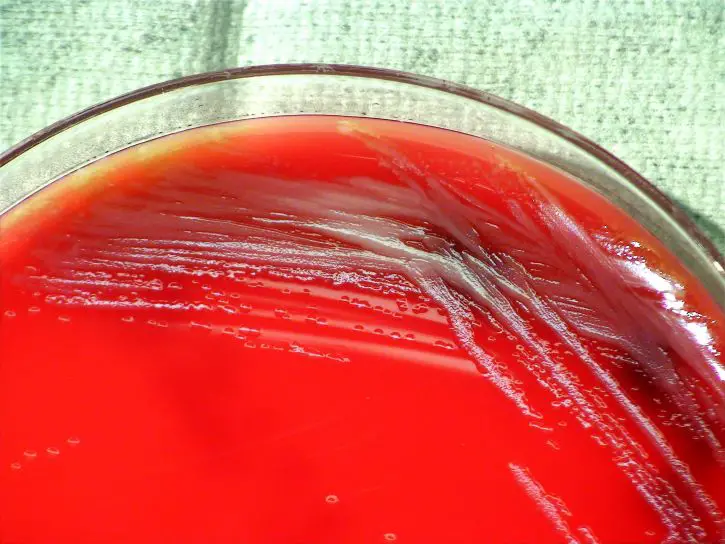Fluorescent Dyes
Types, Vs Proteins, Applications Etc.
Overview
Fluorescent dyes (also known as fluorophores/reactive dyes) may simply be described as molecules (non-protein in nature) that, in microscopy, achieve their function by absorbing light at a given wavelength and re-emitting it at a longer wavelength. This produces fluorescence of different colors that can be visualized and analyzed.
As a result, they are often used in fluorescent labeling of various biomolecules (antibodies, peptides, various proteins, etc) for such processes as monitoring the delivery of drugs to targeted tissues, imaging, among others.
While proteins (e.g. green fluorescent protein) contain fluorescent amino acids (tryptophan, tyrosine, and phenylalanine), they offer photostability and brightness compared to fluorescent dyes. Unlike fluorescent dyes, they also require maturation time thus making them less ideal.
Ideally, fluorescent dyes should:
- Not alter the general shape and function of the target molecules/cells
- Be localized at the target location on the cell/molecule
- Maintain high specificity even in the presence of other molecules
- Operate at visible wavelengths
Fluorescent dyes are divided into several groups that include:
- Organic dyes
- Biological fluorophores
Organic Fluorescent Dyes
Essentially, organic dyes are characterized by emissions originating from optical transition delocalized over the whole chromophore or from intermolecular charge transfer transitions (intramolecular charge transfer from the excited electronic state).
Here dyes that exhibit an emission originating from optical transition delocalized over the whole chromophore are known as resonant dyes (mesomeric dyes) while the latter are referred to as CT dyes (Charge transfer dyes).
Cyanines, rhodamines, and fluoresceins which are some of the most common resonant dyes are characterized by narrow absorption and emission bands (which are slightly structured) that tend to mirror each other as well as small, slightly solvent polarity-insensitive Stokes shift.
CT dyes, on the other hand, include such dyes as coumarins and dansyl fluorophores and are characterized by structureless absorption and emission bands that are well-separated as well as larger stokes shifts as compared to resonant dyes.
As well, compared to resonant dyes, CT dyes have smaller molar absorption coefficients and fluorescence quantum yields.
* For both the resonant and CT fluorescent dyes, spectroscopic properties can be fine-tuned through elaborate design strategies in cases where the structure-property relationship is well known.
Types of Organic Dyes
Fluorescein
Like cyanines and rhodamine dyes, fluorescein is also an organic dye. With an absorption maximum at 494nm and emission maximum of 521nm (typically absorbing light in the blue range and emitting it in the green range), fluorescein is a highly fluorescent substance. It can be detected even when in very small quantities and is used in microscopy when it's conjugated to antibodies.
Derivatives of fluorescein include fluorescein isothiocyanate, Oregon Green, and carboxynaphthofluorescein among a few others. Like a number of other fluorescent dyes, fluorescein is inexpensive and easy to use making it one of the most popular dyes in biological research.
Unlike most of the other dyes, fluorescein is nontoxic in aqueous solutions. As a result, it is one of the very few dyes used as a groundwater tracer.
Fluorescein Isothiocyanate (FITC)
Fluorescein isothiocyanate is one of the most popular organic fluorescent dyes/probes used in flow cytometry and immunofluorescence. It's characterized by a maximum/peak absorbance of 495nm and emission wavelength of 520nm with fluorescein-to-fluorescein interactions resulting in energy transfer and self-quenching when concentrated.
Tagging molecules with the dye can be used for the following purposes:
- Detection of proteins following electrophoretic separations
- Microsequencing analysis of proteins and peptides
- Molecule analysis using capillary zone electrophoresis
- Molecule tracking and detecting in bio-interactions
- Antigen detection in cells and tissue section
- Apoptosis detection through the labeling of DNA fragments
Apart from being easy to use for conjugate preparation due to its solubility in water, Fluorescein isothiocyanate is also brightly fluorescent (due to the large extinction coefficients and high quantum yields following conjugation) making it the dye of choice for many processes.
* In flow cytometry and immunofluorescence microscopy, the dye is conjugated with various antibodies (primary or secondary antibodies) to examine and study such states as IL-17 immunodeficiency and the role of CD63 in renal functions etc.
* As a derivative of fluorescein, Fluorescein isothiocyanate contains an isothiocyanate reactive group which contributes to its reactive nature towards the anime and sulfhydryl groups that typically found in biomolecules.
Flow Cytometry Brief
Whereas immunofluorescence microscopy involves visualizing chemically labeled molecules under the microscope, flow cytometry involves detecting and measuring characteristics of such molecules in a flow cytometer.
In flow cytometry method, a cell suspension (single-cell suspension) from a given culture/tissue sample is incubated in a microtiter with fluorophore-labeled antibodies before being analyzed in the flow cytometer.
In the flow cytometer, a sheath fluid is used to focus the suspension so that its cells pass through a laser beam one at a time. The light emitted (fluorescence from labeled cells) is then detected for analysis.
Cyanine Dyes
Cyanines are resonant dyes characterized by polymethine dyes between nitrogen atoms (two atoms of nitrogen) with a delocalized charge. Because of low non-specific binding to biomolecules as well as bright fluorescence, cyanines have become some of the most popular fluorescent dyes for labeling nucleic acids.
Cyanines are divided into two main groups that include:
Non-sulfonated cyanines - Some of the dyes in this group include cy3, cy3.3, cy5, cy5.5, cy7, and cy7.5. For the most part, these dyes are characterized by low aqueous solubility with the exception of hydrochlorides of amines and hydrazides. See more on amines.
They are first dissolved in organic solvents (co-solvents) before being added to the solution containing biomolecules during biomolecule labeling.
Whereas the "Cy" stands for cyanine, the first digit represents the number of carbon atoms present between the inolenine groups. The .5 suffix, on the other hand, is added to represent the benzo-fused cyanines. These fluorescent dyes are often used for organic media.
Sulfonated cyanines - This group consists of sulfo-Cy3, sulfo-Cy5, and sulfo-Cy7. As the name suggests, these cyanines are characterized by a sulfo-group that contributes to the dissolution of the dye molecules in the aqueous phase.
As compared to non-sulfonated cyanines, these cyanines are more water-soluble and thus do not need to be dissolved in organic solvents for labeling purposes. Sulfonated cyanines are often used to label hydrophobic proteins, nanoparticles in aqueous solutions, and sensitive proteins that may be denatured by DMSO or DMF.
Both groups may be used for labeling of the following biomolecules:
- Peptides
- Oligonucleotides and DNA
- Antibodies
- Soluble proteins
Rhodamine Fluorescent Dyes
Along with eosin and fluorescein, rhodamine belongs to the xanthenes family. As compared to a number of other dyes in the market, rhodamines exhibit excellent photostability as well as a number of photophysical properties making them ideal for use as laser dyes, fluorescent probes, and pigments.
They are particularly useful when it comes to the characterization of the surface of polymer nanoparticles, detecting polymer-bioconjugates, imaging of live cells, as well as the analysis of adsorption of oligonucleotides on latexes among others.
Derivatives of this fluorescent dye are also used as:
- Molecular switches
- Modification of virus surface
- Chemosensors
- Thiols
The different types of the dye are differentiated by their respective substituents (R1, R2, R3, R4, and G). Due to their differences, these fluorescent dyes also exhibit different photophysical properties (e.g. varying fluorescence lifetime and emission maxima) in solution.
Whereas rhodamine dyes, where the amino groups are rigidised exhibit high quantum yield regardless of the temperature range, those with two alkyl substituents at each nitrogen exhibit activated internal conversion with the quantum yield and fluorescent lifetime varying with changing temperature.
Rhodamine 101 and Rhodamine B, which are some of the most commonly used rhodamine dyes have the following characteristics:
- Carboxyl group tends to be protonated in acidic solutions
- Dye is converted to zwitterion basic solution
- Zwitterionic dye changes to colorless lactone in organic solvents that are less polar
* To use rhodamine as a fluorescent probe, it has to be modified. This may be achieved through the modification of amino groups (of the xanthene moiety), the carboxyphenyl ring, or the carboxylic acid group.
* Like TRITC, the fluorescent properties of rhodamine (NHS-rhodamine) are 544nm (maximal absorbance wavelength) and 576nm (emission maximum).
Biological Fluorophores
First used in the 1990s, green fluorescent protein (cloned from the jellyfish Aequorea Victoria) and its derivatives (e.g. phycoerythrocyanin, phycobiliproteins, and phycoerythrin etc) are some of the most commonly used biological fluorophores in biological research today.
While the fluorophore are useful for the expression of plasmids in cells, bacteria and various organs, their use has some disadvantages in that it can be time-consuming and also capable of changing normal biological functions of some cellular proteins when fused.
Moreover, compared to a number of other fluorophores, biological fluorophores provide a lower level of photostability and sensitivity.
* In Aequorea Victoria, the gene responsible for the production of GFP is Gfp.
Green Fluorescent Protein (GFP)
Green fluorescent protein, one of the most popular biological fluorophores, consists of 238 amino acids with three of these being responsible for the structure that emits visible green fluorescent light. In the jellyfish itself, the fluorophore interacts with aequorin (a protein) to emit a blue light when calcium is added.
Through DNA recombinant, it has become possible for researchers to use the gene responsible for producing the protein to study given genes and proteins. Here, the gene is combined with another gene (the second gene being responsible for the production of the desired protein) before inserting the complex into a cell.
In the event that the cell produces a green fluorescence, it becomes evident for researchers that the cell is capable of expressing the target gene.
* GFP is excited by the 488nm laser line and can be detected at 510nm.
* The weak signals from the fluorophore may be amplified using anti-GFP antibodies.
As a biological marker, Green Fluorescent Protein is used for the following functions:
- Monitor various physiological processes
- Identify protein localization
- Detect transgenic expression
Some of the other biological fluorophores in use today include:
Phycoerythrin - Phycoerythrin (PE) is a red protein pigment complex that belongs to the phycobiliprotein family. It can be found in red algae as well as cryptophytes where it acts as an accessory to the chlorophyll pigments.
In biological sciences, the fluorophore can be conjugated to such proteins as antibodies for antigen detection etc given that it is capable of emitting bright fluorescence. Because the fluorophore tends to photobleach rather quickly, it's rarely used in fluorescence microscopy. However, it's often used in flow cytometry.
Allophycocyanin (APC) - Like Phycoerythrin, Allophycocyanin also belongs to the phycobiliprotein family and is isolated from red algae. Excited by laser lines at 594 and 633 nm, absorbance maximum of the fluorophore is at 650nm while fluorescence emission peaks at 66nm.
The sensitivity of the fluorophores has been shown to be between 5 and 10 times higher compared to fluorescein conjugate with a number of other beneficial properties that include large Stokes shifts, high water solubility, long-wavelength emission and being quench-resistant.
While Allophycocyanin is not usually used for applications that require photostability, it is widely used in such processes as flow cytometry, ELISA, microarrays as well as a variety of applications that depend on high sensitivity.
Quantum Dots
Developed in the 1980s, quantum dots are nanocrystals (inorganic nanocrystals) that range between 2 and 50nm in size. Depending on the size, the light emitted shifts from blue to red (with small QT exhibiting blue light while larger ones exhibit red light).
As compared to some of the other fluorophores in use today, quantum dots have a big advantage in that their optical properties can be controlled/regulated by controlling the particle size, surface chemistry, distribution, as well as constituent material.
For this reason, they are suitable for such processes as immunolabeling, multiplexed biological detection as well as molecular imaging both in vitro and in vivo assays.
One of the main characteristics of the probes is that they have wide excitation wavelength ranges as well as narrow emission ranges as a result of quantum scale effect.
By taking advantage of this particular property, it's possible to excite multicolor quantum dots under the same source of light and achieve multiplexed detection and observation of several targets in a biological sample.
Some of the other beneficial properties of quantum dots that set them apart from other fluorophores include:
- Exhibit high quantum yield ranging from 40 to 90 percent
- Very high fluorescence intensity - This being about 20 times brighter than a molecule of rhodamine 6G11
- Highly resistant to photobleaching
- Larger the size of the probe, the longer the emitted wavelength
* One of the main drawbacks of quantum dots is luminescence intermittency (blinking) that may affect some processes of molecule detection.
To join biological molecules to quantum dots (bioconjugation), the following strategies are used:
· Electronic interaction - Using surfactants (such as Thioglycolic acid) to modify quantum dot surfaces and improve solubility.
· Covalent linkage - Involves the use of such strategies as connecting the functional groups of the molecule (e.g. carboxyl and amino functional groups) to the surface of quantum dots.
· Functionalized microbeads as mediators - May involve the encapsulation of the quantum dots into polymeric microbeads which allows the functional groups on their surface to be conjugated to biomolecules.
* Carbon-based quantum dots (e.g. Graphene quantum dots) are the new generation of the probe. Apart from retaining the many advantages of traditional quantum dots, they have also been shown to exhibit more beneficial properties during bioconjugation with very little cytotoxicity.
See also: Cytotoxicity testing for medical devices
Nanoparticles
The term nanoparticles refer to particles that range between 1 and 100 nanometers in size. Due to their small size, nanoparticles are often used for fluorescent imaging of different types of cells and tissues.
Some of the nanomaterials typically used in bio-imaging today include carbon dots, noble metal nanoparticles, polymer dots, quantum dots, and fluorescent doped silica among others.
In imaging, nanoparticles/nanomaterials present several advantages that make them ideal as compared to other molecular fluorophores and probes. Apart from improved brightness, nanoparticles are inert and tend to be evenly distributed which contributes to better results during imaging.
Moreover, as compared to various molecular fluorophores, nanoparticles and nanomaterials are not cytotoxic and are unaffected by issues of nonspecific binding. Because of these properties, the majority of fluorescent nanoparticles (dyed nanoparticles) can be internalized into cells/tissues and easily targeted to given sites.
* Nanoparticles can be coated/modified with fluorophores on their surfaces to make them make them fluorescent and improve such properties brightness, biocompatibility and cell-permeability.
Some of the primary application of nanoparticles include:
- Targeted bio-imaging
- Plain fluorescence imagine
- Chemical species imaging
- Temperature imaging
Nanoparticles Limitations
While such nanoparticles as quantum dots have many advantages, as stated above, they also have several setbacks and limitations that can affect their functions.
The optical properties of many nanoparticles are directly linked to their core structure. For this reason, they are not flexible which may affect the level of overall brightness. Therefore, it becomes necessary to modify their surfaces.
While this can help improve their properties, it also introduces additional issues given that such modifications also tend to increase the final size. As well, a majority of nanoparticles are not biodegradable which has raised concerns over long-term toxicity issues.
Return to Fluorescence Microscopy
Return to Immunofluorescence Microscopy
Return from Fluorescent Dyes to MicroscopeMaster home
References
Alexander P. Demchenko. (2010). Advanced Fluorescence Reporters in Chemistry and Biology II: Molecular: Molecular Constructions, Polymers and Nanoparicles.
Andreas Reisch and Andrey S. Klymchenko. (2016). Fluorescent Polymer Nanoparticles Based on Dyes: Seeking Brighter Tools for Bioimaging. ncbi.
Dahai Ren, Bin Wang, Chen Hu, and Zheng You. (2017). Quantum dot probes for cellular analysis. Analytical Methods.
Mary Johnson. (2011). FITC/Fluorescein. Labome.
S James Remington. (2011). Green fluorescent protein: A perspective. ncbi.
Ute Resch-Genger et al. (2008). Quantum dots versus organic dyes as fluorescent labels.
Yawen Zou. (2014). Green Fluorescent Protein.
Links
https://www.lumiprobe.com/tech/cyanine-dyes
https://www.thermofisher.com/ke/en/home/life-science/cell-analysis/fluorophores/allophycocyanin.html
https://www.leica-microsystems.com/science-lab/fluorescent-dyes/
Find out how to advertise on MicroscopeMaster!
